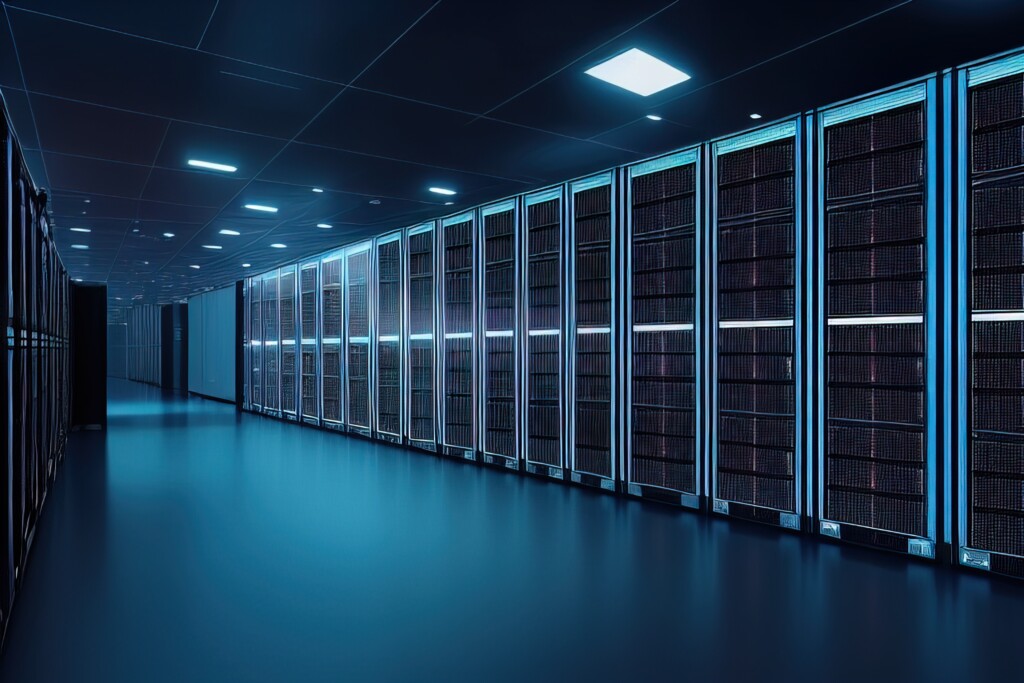As we increasingly digitize the world around us, one question that we cannot afford to overlook is, “How can we reconcile technological advancement with environmental sustainability?” The answer to that complex question lies at the heart of an emerging field known as Green Computing.
Green Computing, also familiar as Green IT, refers to the environmentally responsible and eco-friendly use of computers and their resources. The ultimate goal is to reduce the carbon footprint, minimize energy use, and promote recycling whenever and wherever possible.
💻 Computing green isn’t just about saving the planet. It’s also about designing, manufacturing, using, and disposing of computers, servers, and associated subsystems with minimal impact on the environment.
But where did Green Computing originate? It traces its roots back to 1992 when the U.S. Environmental Protection Agency launched a voluntary program to promote energy efficiency in hardware of all types, which was called the Energy Star. Since then, the idea of Green Computing has continued to gain ground, global recognition, and urgency.

Green computing is an ever-growing concept, embodying a multitude of concerns related to the environmental impact of the digital realm. Its scope encompasses the energy consumption of data centers, the issue of electronic waste (e-waste), and the carbon footprint of the digital realm. Here, we will dive deep into each of these aspects and discuss their implications on our environment.
Energy Consumption of Data Centers: To keep up with the rapid pace of digital transformation, data centers have grown exponentially. These data centers are power-hungry entities, consuming vast amounts of energy to efficiently store, process, and access the world’s digital information.
Nearly 2% of the world’s total energy use goes to data centers.

Without green computing, the energy consumption of these data centers could keep escalating, causing a critical impact on our environment.
Electronic Waste (E-Waste) and its Implications: The evolution and acceptance of new technologies often render old devices obsolete, leading to an increasing amount of electronic waste or e-waste. E-waste is a significant concern as it often contains hazardous substances that can harm the environment if not disposed of correctly.
Beyond landfill issues, e-waste also symbolizes a tremendous waste of resources since many of these gadgets contain precious metals that could be recovered and reused.
Carbon Footprint of the Digital Realm: The digital domain isn’t as clean as it appears. From the manufacturing of devices to the energy used by data centers, the digital world leaves a substantial carbon footprint.
The IT industry’s share of global carbon emissions could be up to 3%.
Green computing involves efforts to reduce this carbon footprint, creating a more sustainable digital future.
Green computing is not just another tech buzzword, but a call to action. It is a philosophy that embraces sustainable practices at every stage of computing, from the hardware and software we use, to the IT infrastructures that support them. Are you ready to venture into the world of green computing? Let’s dive in.
These are critical aspects of green computing. By choosing energy-efficient processors, hard drives, and peripherals, we significantly reduce power consumption and therefore, our carbon footprint. When you are sourcing for computer components, keep an eye out for items marked with an “Energy Star” or equivalent rating. This signifies they meet certain standards for power efficiency. To put it simply: Green hardware is designed to perform the same tasks as regular hardware, just in a more energy-conscious way.
Even the software and operating systems we use can contribute to green computing. Power-saving software enables computers to enter a low-power state when not actively in use, therefore conserving energy. Similarly, many operating systems have built-in energy saving settings and features. Using these power-management features can reduce energy consumption by as much as 70%. There’s no denying that: Eco-friendly software has the potential to make a big dent in overall power consumption.
Implementing green computing doesn’t stop with personal devices. It extends to the broader IT infrastructure. Embracing cloud computing and virtualization are two ways to boost sustainability in this area.
Cloud Computing: By storing data and running applications in the cloud, we reduce the need for energy-consuming local servers. This makes cloud computing an eco-friendly option.
Virtualization: Virtualization allows companies to consolidate multiple servers or desktops onto a single machine, increasing efficiency, and reducing power consumption.

Green computing is not only about making eco-friendly choices when purchasing new electronic devices but also involves taking into consideration what to do with our old ones. Proper disposal of old electronics holds great significance in green computing. Let’s take a closer look at this aspect. Proper Disposal of old Electronics
Consider this, how many electronic devices have you replaced in the past year? And what happened to the old ones? Probably, abandoned in a drawer or worst-case scenario, ended up in the landfill.
💡 Fact: Did you know that electronic waste, also known as ‘e-waste’, is one of the fastest-growing waste streams in the world? In fact, we generated around 61.3 million metric tons of e-waste in 2023 alone, according to the Global E-Waste Monitor.
Now you realize why proper disposal of old electronics is so crucial. By correctly disposing or recycling our old gears, we can prevent harmful substances found in e-waste from polluting our environment. Indeed, it’s a significant part of green computing.
The Significance of Recycling Components
After disposal comes the recycling phase. This could mean anything from salvaging useful components for reuse, to extracting valuable metals and other materials. Recycling components is another essential aspect of green computing. Firstly, it reduces the demand for new components, thereby reducing the amount of energy and resources used to produce new ones. Secondly, it can significantly decrease the volume of electronic waste disposed of in landfills. Finally, recycling of certain components such as metals, can help alleviate issues of scarcity for certain rare and precious materials.
Extended Producer Responsibility (EPR)
The Extended Producer Responsibility, or EPR, is essentially a policy approach under which producers are given significant responsibility for the treatment or disposal of post-consumer products. This means that manufacturers of electronic products should take accountability for their products during and after their useful life.
EPR implies manufacturers should design products to be easily recyclable, create efficient recycling systems, and most importantly, encourage customers to return their old devices for proper disposal or recycling.
The introduction of EPR regulations encourages producers to integrate environmental considerations in their product design and choice of materials. By understanding what proper disposal of old electronics is, the significance of recycling components, and the diligence in adhering to Extended Producer Responsibility (EPR), we can each contribute to green computing in our own, small ways.

One of the key considerations in green computing is the design and architecture of hardware and software systems to reduce energy consumption. Techniques like virtualization, cloud computing, and efficient code writing are used to cut down power usage and to decrease the carbon footprint.
Data centers, which are the beating heart of the internet and global communication, are unquestionably power-hungry. They require vast amounts of energy not just for computing power but also for cooling systems. An effective way to move towards green computing is by powering these data centers with renewable energy. This not only reduces the environmental impact but also significantly cuts energy expenditure.
Cooling is an essential aspect of data centers, and providing energy-efficient cooling systems is a pivotal challenge in green computing. Implementing innovative cooling strategies like immersive cooling, using heat exchangers, or even utilizing the ambient environment for cooling can help in achieving this objective.
Green Computing may require an upfront investment, but it pays in the long term through operational savings, brand reputation, and contributes towards sustainability which is nothing short of a global imperative.
Energy Star is a labeling program that signifies energy-efficient products. Originating in the U.S., it has become an international standard. Products like computers, servers, and related equipment with the Energy Star label meet specific standards that allow them to operate efficiently and reduce greenhouse gases. It’s essentially a stamp of approval, showing that the device has been designed with the environment in mind.
Another brilliant tool contributing to green computing is EPEAT (Electronic Product Environmental Assessment Tool). This resource provides a clear and comprehensive set of environmental criteria for electronic products. If a product is ranked highly on EPEAT, it means it’s designed, manufactured, used, and disposed of in a way that improves overall environmental sustainment.
At a higher level, green computing also involves establishing Green IT Policies and Regulations aimed at fostering environmentally friendly IT, focusing on everything from manufacturing processes to recycling practices. These laws and guidelines ensure that technology advancement doesn’t compromise our environment.
💚 Remember: Every choice we make in our consumption of technology will significantly impact our world. Choose wisely.
Adopting green computing offers a myriad of benefits that extend far beyond just the environmental impact. Let’s delve into some of these benefits without any further ado:
Green computing promotes the judicious use of energy, targeting sustainable and efficient operations. By optimizing power settings, using Energy Star-rated devices, and considering energy-efficient architecture, both organizations and individuals can substantially reduce their carbon emissions. As energy costs continue to rise globally, the value of energy efficiency cannot be understated. Not only does it aid in curbing harmful environmental effects, but it also offers tangible monetary savings in energy bills.
Optimizing resource usage is a cornerstone of green computing. Through strategies like virtualization, a single server can run multiple virtual machines, negating the need for several physical servers. Similarly, cloud computing allows businesses to use shared resources, scaling up or down based on demand. These practices lead to a substantial decrease in resource wastage, as they make the most out of each component. This streamlined utilization not only reduces costs but also the space required for IT infrastructure, ultimately leading to more sustainable tech ecosystems.
The rapid pace of technological advancement unfortunately results in a considerable amount of obsolete electronics, contributing to the global e-waste issue. Green computing, however, advocates for more durable devices, efficient recycling strategies, and upgradation over replacement. By choosing products designed for longevity and recycling those that reach their end-of-life, we can significantly diminish e-waste production. Reducing this waste not only alleviates environmental burden but also minimizes the hazards linked to the improper disposal of electronics.
The financial benefits of green computing are multifaceted. By promoting energy efficiency, there’s a direct correlation with reduced electricity costs. Moreover, through maximized resource utilization, there’s less need for frequent hardware replacements or additions, further cutting down expenditures. This conservation-oriented approach proves that environmentally-friendly practices can also be economically viable. For businesses, these savings can be redirected to other growth initiatives, creating a win-win for both the environment and the balance sheet.
In today’s conscientious market, consumers are increasingly leaning towards businesses that demonstrate social responsibility. Adopting green computing positions a business as an eco-friendly and forward-thinking entity. This positive branding can lead to enhanced customer loyalty, attract environmentally-conscious clientele, and even offer a competitive edge in the marketplace. Demonstrating commitment to sustainable practices can also foster trust among stakeholders, proving that the organization is not just profit-driven but also values the planet’s wellbeing.
Embracing green computing is no longer just an option but a necessity. Its myriad benefits span from conservational to economical, emphasizing the importance of integrating it into our daily technological interactions. Making the shift might require effort, but the long-term rewards for both our planet and pockets make it an invaluable transition.
Trying to reduce your digital carbon footprint? You’re in the right spot! Here are some straightforward yet impactful ways you can start taking part in green computing right now:
Screen brightness has a direct correlation with power usage. By dimming your device’s screen, you’re substantially decreasing its energy consumption. For instance, studies have shown that operating a laptop on its highest brightness can use up to 20% more energy than using it at a reduced brightness. Moreover, a dimmer screen reduces eye strain and glare, contributing to improved eye health. Adjusting the screen settings can thus be a simple, health-friendly step towards greener computing.

Even when they’re off, many devices still draw what’s known as “phantom” or “vampire” power. For instance, a charger left plugged in without its device can consume up to 10% of its usual power. Over time, this idle consumption can cumulatively lead to a significant energy drain. By making a habit of turning off and unplugging unused devices, you can combat this hidden energy expenditure and further reduce your carbon footprint.
Energy-efficient devices are designed with power-saving technologies that reduce their environmental impact. For example, an Energy Star-certified laptop can use 60% less energy than a non-certified one. These devices often employ components that require less power, advanced power management features, and more efficient internal designs. When purchasing, certifications like Energy Star, EPEAT, or TCO Certified serve as a seal of approval, indicating the device’s alignment with recognized green standards.
Cloud services centralize data storage, resulting in fewer individual servers worldwide. These cloud servers are typically hosted in data centers designed for maximum energy efficiency. For instance, a Google data center uses 50% less energy than a typical data center. Migrating to cloud storage not only decreases energy consumption but also minimizes the need for personal storage devices, reducing e-waste.
E-waste contains toxic materials like lead, mercury, and cadmium. When not disposed of properly, these toxins can leach into the soil and water. Instead of discarding old electronics, recycle them through proper channels. Big players like Apple and Samsung have recycling programs that ensure devices are responsibly recycled or repurposed. By choosing these channels, you’re mitigating the environmental harm associated with e-waste.
As we strive for technological efficiency, incorporating sustainable habits becomes pivotal. With these expanded steps, users can easily understand the profound effects of their choices and actively contribute to a greener digital world. Embracing green computing isn’t just about monumental shifts but also these seemingly small everyday choices that collectively have a monumental impact.

As we continue to navigate through our technological age, we’re beginning to witness a dramatic shift in thinking within the IT industry. A shift towards a more sustainable future – embracing what’s known as Green Computing. But what does this paradigm shift imply for future innovations, including the role of Artificial Intelligence (AI) and automation? Let’s delve into this.
In a world where technology takes center stage, Green Computing emerges as our commitment to combine technological innovation with environmental responsibility.
Role of AI and automation: These powerful technologies are playing a central role in enhancing energy efficiency. By reducing the energy required for particular processes, automating tasks and activities, and improving process efficiency, AI and automation are significantly moving the needle towards a more sustainable IT industry.
Potential Shifts in the IT industry: A notable trend is the shift towards renewable energy to power data centers. Companies are increasingly exploring options such as utilizing solar power, wind energy, and other renewable sources as viable alternatives to the traditional energy sources.
Next-generation materials: There’s a growing focus on replacing common but energy-intensive materials used in computing with more sustainable options. For instance, initiatives are underway to develop alternatives for silicon, the primary resource used in computing chips, which has a hefty environmental cost associated with its extraction and processing.
Understanding these implications of green computing is the first step towards a greener future. Because in this age of digital transformation, being environmentally conscious doesn’t just mean recycling your cans and bottles – it means making smarter, more sustainable technology decisions too.
Stay a while and read more posts like this
Let’s devote a few minutes to envision our world in 2100. It’s quite a thought experiment, given the dramatic transformations our planet has experienced in...
With climate change looming large, the world is embarking on a quest for solutions to heal our ailing planet. Solar geoengineering emerges as a burgeoning field,...
Taking on parenthood comes with unique choices that factor in more than just our family’s immediate needs. For modern parents, who are not just guardians of...